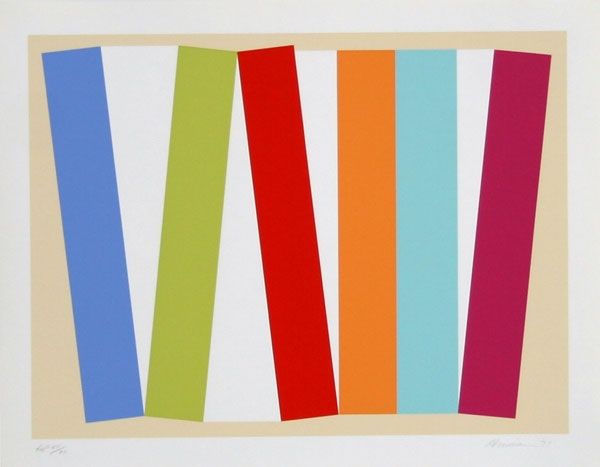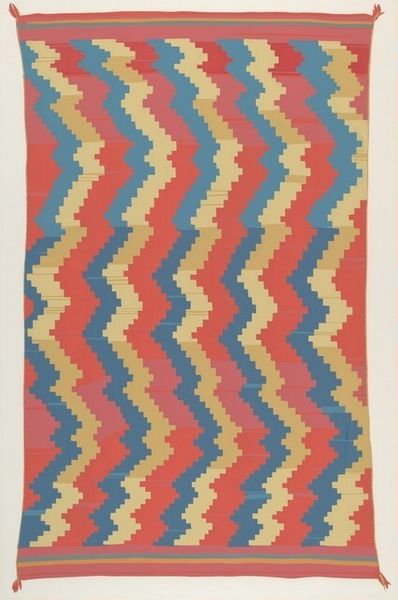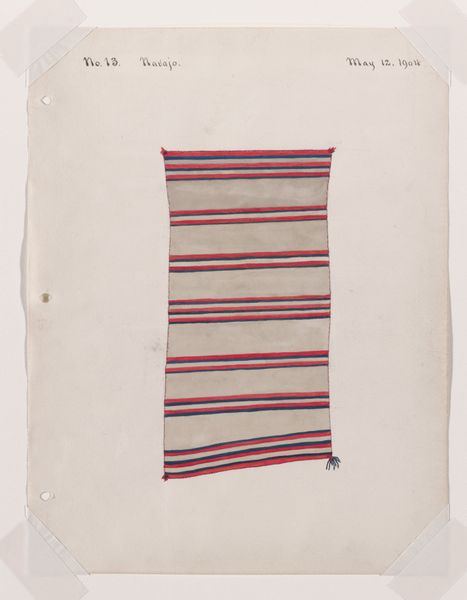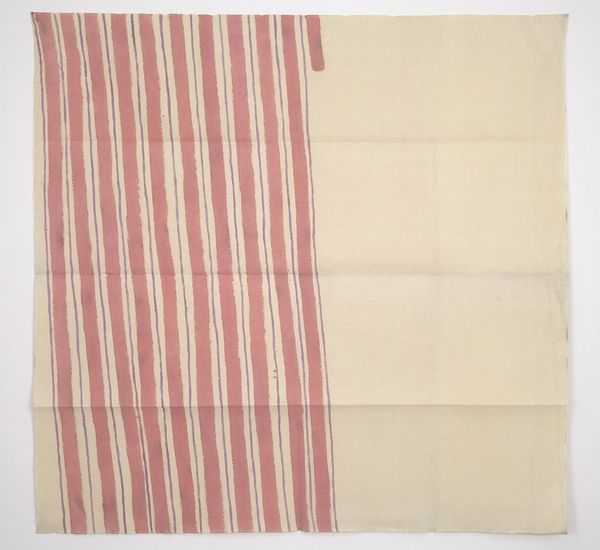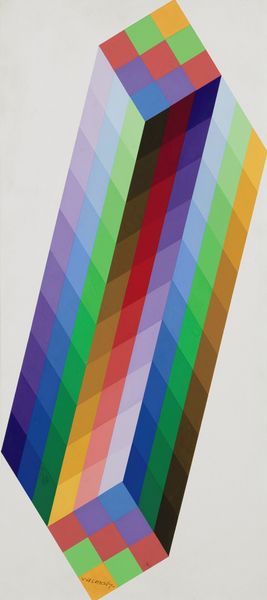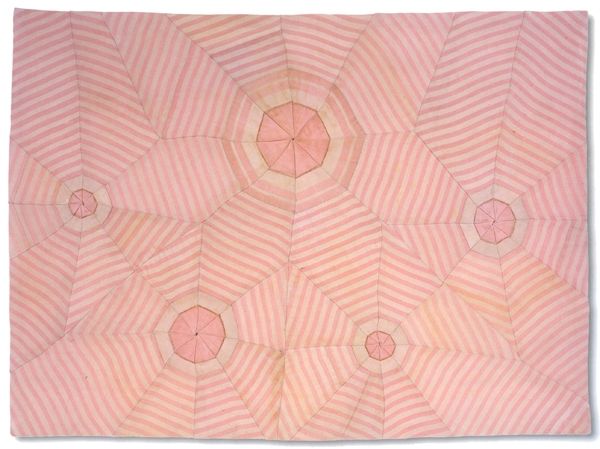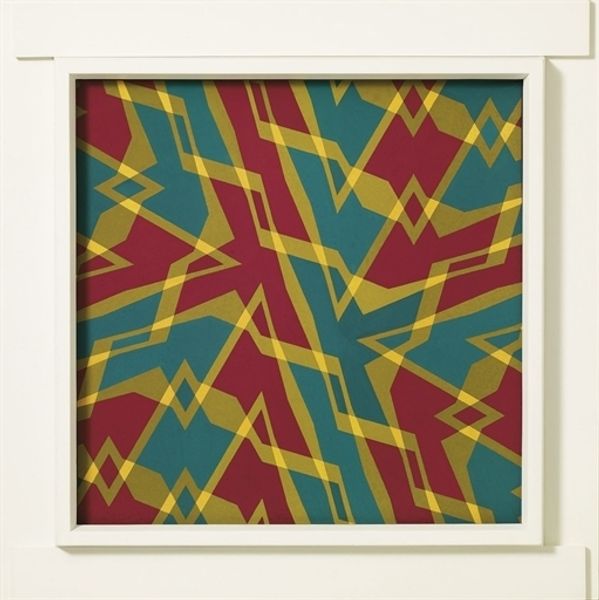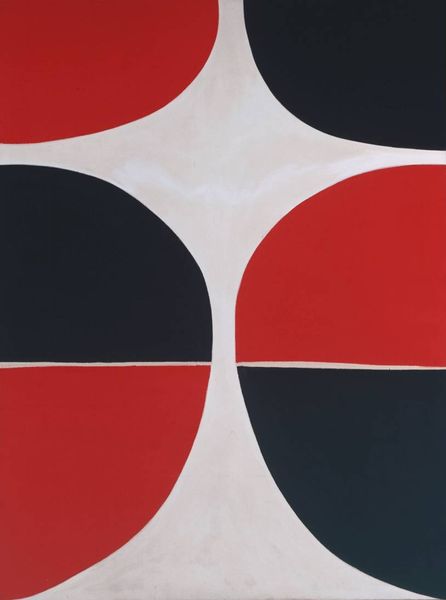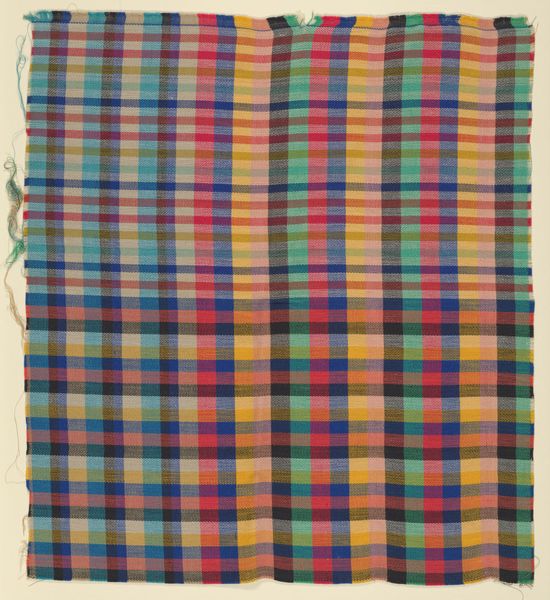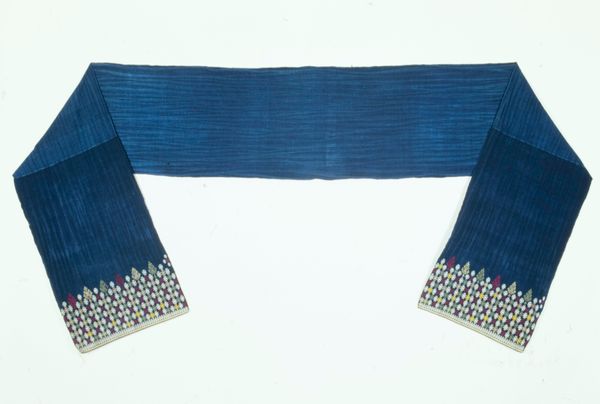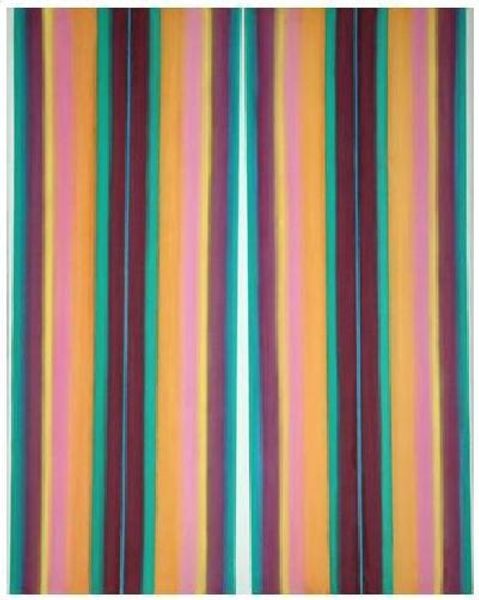
painting, acrylic-paint
#
abstract-expressionism
#
painting
#
pattern
#
acrylic-paint
#
geometric
#
geometric-abstraction
#
line
Copyright: Jeremy Moon,Fair Use
Curator: Immediately striking, isn't it? Like a distorted flag, perhaps signaling… what? Soft power? Editor: Yes, I’m immediately drawn to the unusual shape. This acrylic painting, titled "Blue Rose," was created by Jeremy Moon in 1967. What's interesting to me is how he employs the acrylic medium to achieve such clean lines and geometric precision. It begs the question: was he exploring the boundaries between the clean precision enabled by industrial materials, and handmade craft itself? Curator: The hard-edged geometry against those pastel shades…there's something disconcerting there. Were such works generally shown in domestic or gallery settings in the 60's? I mean, how did people interact with such work? It doesn't obviously lend itself to contemplative consumption like a landscape. Editor: Contextually, Moon’s work appeared during a fascinating shift in British art. In the 1960s, London was becoming a center for art, challenging the dominance of the Paris and New York art scenes. Artists like Moon were reacting against traditional art hierarchies, embracing abstract forms. As for settings, pieces like this found their place in both galleries and design-conscious homes, reflecting a wider cultural move toward pop sensibilities. Curator: Thinking about production then, the appeal would depend on widespread, standardized manufacturing and an interest in flat-pack aesthetics; accessible art and design for a newly empowered consuming public. Editor: Exactly. One can imagine that acrylic, in particular, held a radical kind of appeal at the time: something clean, new and machine-made over painting’s traditional materials. But did this "Blue Rose" ultimately challenge or uphold existing power structures within the art world, by democratizing access to visual enjoyment and elevating the craft, or vice versa? Curator: Or both perhaps? An interesting blend, really. It does makes you rethink painting’s social role, and materiality's symbolic meaning. Editor: Indeed. A thought-provoking piece to conclude on; it leaves us contemplating the intersection of art, design, and social history.
Comments
No comments
Be the first to comment and join the conversation on the ultimate creative platform.
